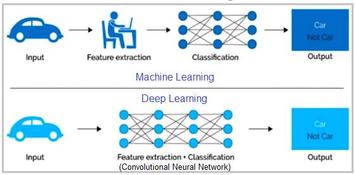10 interview questions and answers on AI/ML
Advertisement
Here’s a collection of commonly asked questions and answers related to Artificial Intelligence and Machine Learning, designed to help you succeed in job interviews or engineering vivas.
Question 1: What is Artificial Intelligence (AI)?
Answer: Artificial Intelligence (AI) is about creating machines that can mimic human intelligence. We’re talking about programming computers to think and perform tasks that usually require human cognitive abilities, such as learning, problem-solving, reasoning, and making decisions.
Question 2: What is Machine Learning (ML)?
Answer: Machine Learning (ML) is a branch of AI. It focuses on developing algorithms and models that allow computers to learn from data without explicit programming. Instead of hard-coding rules, ML enables computers to make predictions or decisions based on patterns they discover in the data.
Question 3: Can you explain the difference between supervised learning, unsupervised learning, and reinforcement learning?
Answer: Let’s break it down:
-
Supervised Learning: This is like learning with a teacher. You train a model using labeled data, meaning each data point has a corresponding “correct answer” or target label. The model learns to map inputs to outputs.
-
Unsupervised Learning: Here, you’re giving the model unlabeled data. The model’s job is to find hidden patterns, structures, or groupings within the data on its own.
-
Reinforcement Learning: Think of this as learning through trial and error. An “agent” learns to interact with an environment by taking actions and receiving feedback in the form of rewards or penalties. The goal is to maximize rewards over time.
Question 4: What are some common algorithms used in machine learning?
Answer: There are many! Some popular ones include:
- Linear Regression
- Logistic Regression
- Decision Trees
- Random Forests
- Support Vector Machines (SVM)
- K-Nearest Neighbors (KNN)
- Neural Networks
- Clustering algorithms like K-Means and Hierarchical Clustering
Question 5: What is the bias-variance tradeoff in machine learning?
Answer: The bias-variance tradeoff is about finding the right balance between two types of errors in your model:
- Bias: This is the error introduced by simplifying a real-world problem too much. A high-bias model might miss important relationships in the data.
- Variance: This is the model’s sensitivity to small changes in the training data. A high-variance model might fit the training data very well but perform poorly on new, unseen data.
The goal is to find a model that has low bias and low variance, so it generalizes well to new data.
Question 6: What is overfitting, and how can it be prevented?
Answer: Overfitting happens when a model learns the training data too well. It starts memorizing noise and irrelevant patterns, which means it performs poorly on new data.
To prevent overfitting, you can use techniques like:
- Cross-validation: Evaluate your model on different subsets of the data.
- Regularization: Add penalties to the model to discourage overly complex solutions.
- Feature Selection: Choose only the most relevant features to reduce noise.
- More Data: Increasing the size and diversity of your training data can help the model generalize better.
Question 7: Can you explain the concept of feature engineering in machine learning?
Answer: Feature engineering is all about creating the right input features for your model. It involves selecting, transforming, and creating new features from the raw data to improve the model’s performance. This can include things like:
- Data preprocessing (cleaning and preparing the data)
- Feature scaling (normalizing or standardizing features)
- Dimensionality reduction (reducing the number of features)
- Creating interaction terms or polynomial features
Question 8: What is deep learning, and how does it differ from traditional machine learning?
Answer: Deep learning is a specialized area within machine learning that uses deep neural networks with many layers of interconnected nodes (neurons). The key difference is that deep learning models can automatically learn hierarchical representations of data directly from raw input. Traditional machine learning often requires manual feature extraction, where you need to carefully select and engineer the features that the model will use. Deep learning can learn these features automatically.
Question 9: What are some real-world applications of AI and machine learning?
Answer: AI and ML are everywhere! Here are a few examples:
- Natural Language Processing (NLP): Speech recognition, language translation, sentiment analysis.
- Computer Vision: Image recognition, object detection, autonomous driving.
- Healthcare: Disease diagnosis, personalized medicine, medical imaging analysis.
- Finance: Fraud detection, algorithmic trading, credit scoring.
- E-commerce: Recommendation systems, personalized marketing, supply chain optimization.
Question 10: What are some ethical considerations and challenges associated with AI and machine learning?
Answer: As AI and ML become more powerful, it’s crucial to consider the ethical implications. Some key challenges include:
- Bias and Fairness: Algorithms can inherit biases from the data they’re trained on, leading to unfair or discriminatory outcomes.
- Transparency and Interpretability: It can be difficult to understand how some AI models (especially deep learning models) make their decisions, raising concerns about accountability.
- Privacy: Data collection and usage can raise serious privacy concerns.
- Job Displacement: Automation driven by AI could lead to job losses in certain sectors.
- Responsible Deployment: It’s crucial to ensure that AI is used responsibly in critical domains like healthcare and criminal justice.
Addressing these challenges requires a collaborative effort involving technologists, policymakers, ethicists, and society as a whole.
Advertisement
 RF
RF

